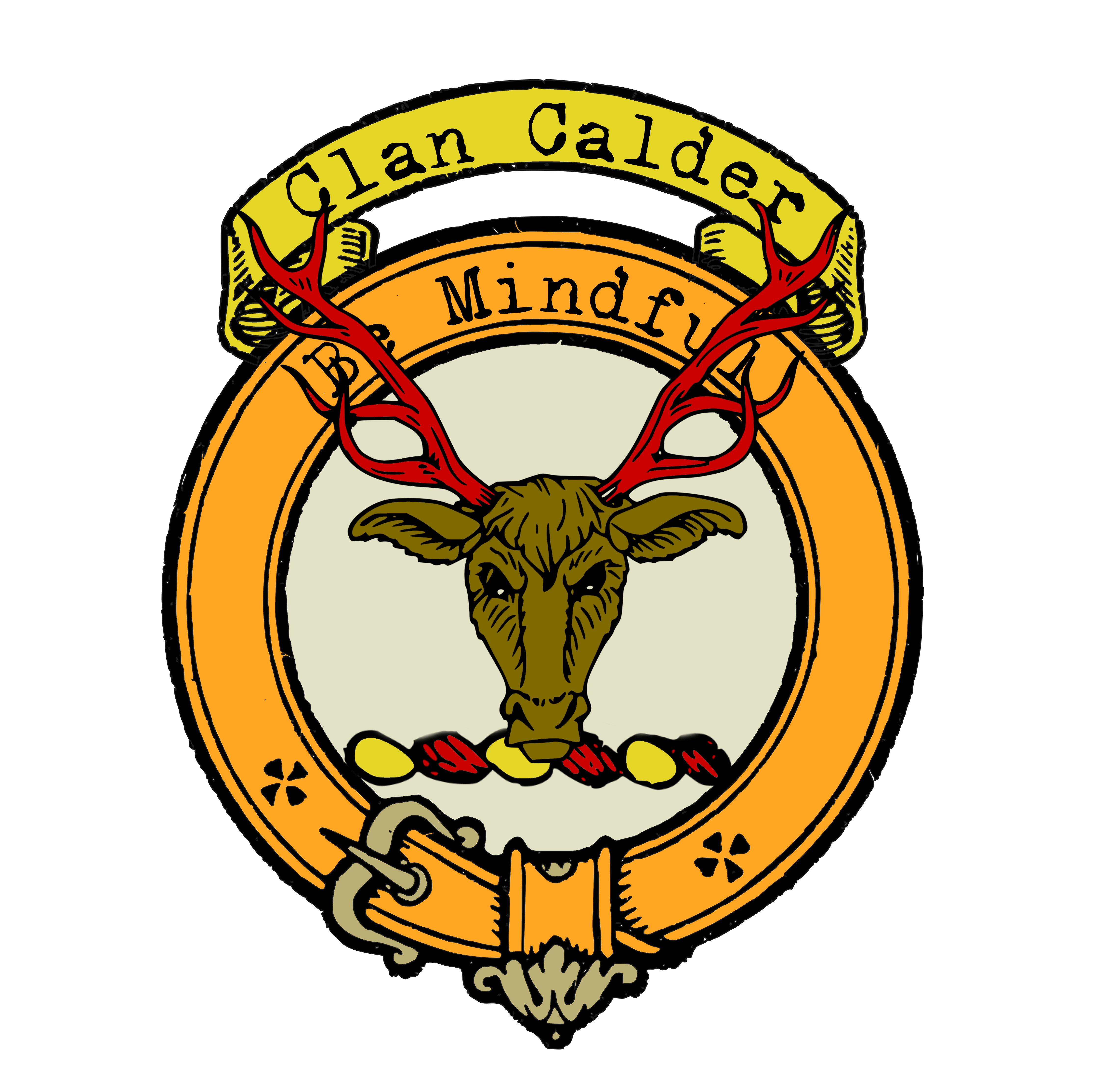Calder Clan
|
|
CREST: A hart’s head cabossed, Sable, attired Gules MOTTO: Mindfull |
| The Calder clan has a rich and complex history that spans several centuries in Scotland. The name Calder is derived from the Scots word for a small stream, and it is a common place name throughout Scotland. The Calders were great nobles with considerable lands around Inverness from the 14th century onwards. They inter-married with other local families, particularly the powerful Rose family, Barons of Kilravock.
One of the earliest records of the Calder family is a French knight, Hugo de Cadella, who was created Thane of Calder, later known as Cawdor, in Nairnshire. This event is said to have brought the name Calder to prominence in Scotland. However, the name may have also arisen from Hugh de Daledouer, who was listed as a witness to a charter of land near Montrose around 1178. The Calders were known for their extensive holdings in the Scottish Highlands and for their contributions to Scottish society. They built the substantial tower that still stands at the heart of the fine Cawdor Castle, which was built around 1454. The castle has been the seat of the Calder family for centuries, and the present Earl Cawdor still lives there. However, the Calder family’s ascendancy came to an end when Archibald Campbell, Earl of Argyll, was appointed guardian to the infant female heir of the Calder family along with Hugh Rose of Kilravock. Campbell determined to remove the child to Inverary to be educated as part of his family, but her uncles Alexander and Hugh Calder pursued the child and her Campbell escort into Strathnairn. After considerable loss of life, she was safely delivered to Inverary and brought up as a Campbell. She later married Sir John Campbell, son of the Earl of Argyll. Muriel, the last of the Calders, died around 1575. However, her descendent, John Campbell of Cawdor, was raised to the peerage as Lord Cawdor in 1796, and his son was created the first Earl Cawdor in 1827. The name of Calder did not disappear, and the Calders of Asswanly received lands near Elgin in 1440. This family obtained a baronetcy of Nova Scotia in 1686. The most notable member of this branch of the family was Admiral Sir Robert Calder, who saw substantial service during the Napoleonic Wars. Calders are still to be found around Inverness, with notable figures such as Douglas Calder, who was appointed director of Planning for the newly created Highland Region in 1974 and was also sometime President of the Royal Incorporation of Architects in Scotland. Today, the Calder clan continues to hold a special place in Scottish history, with their rich legacy and contributions to Scottish society. |
|

 Purchase @ Redbubble
Purchase @ Redbubble
Purchase @ Amazon.com
Purchase @ Amazon.co.uk
